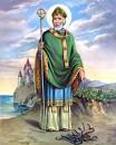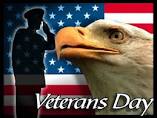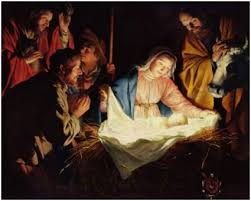 Patrick was born in fourth century Roman Britain (c. 390-461) to a loving family of wealth. His parents were most likely successful merchants and administrators of Rome. On February 27, 380, Roman Emperor Theodosius issued the Edict of Thessalonica and declared the official religion in the empire to be the Catholic Church. Patrick was brought up in this faith. He had a privileged childhood as the son of wealthy Roman leaders, but suffered great hardships for a number of years. Patrick brought Christianity to the Irish and changed the course of history. At the beginning of the medieval ages, many in Europe clung to the pagan religions of the past. Ireland, the island to the west of Britain, was a land where Christianity was unknown. Celts in Ireland followed a belief called Druidism. They believed in many gods, and Druid priests had many practices that we would call barbaric. Druids sacrificed humans to keep their gods happy. As a sixteen year-old, Patrick’s easy life of comfort and prestige changed forever. Some reports state Patrick had snuck out of his parents’ home and took part in an all-night pagan ritual. With dawn breaking, a small band of Irish pirates raided Britain and captured Patrick. He was taken to Ireland and sold into slavery, completely separated from his loving parents. Patrick wrote later that he had left the faith of his family, and for this he was being punished. For six years, Patrick worked as a common slave in Ireland. At any instant, he could be killed, mutilated, or beaten by his owner. He was far from his home and far from any help his Christian friends could provide. Instead of becoming desperate and sad, though, Patrick spent his time in prayer and reflection. Working as a shepherd for six years, he grew to love the Irish land and people, and yearned to one day teach them the Christian belief. He united his sufferings as a slave to the sufferings of his savior, Christ, and his love for his captors grew. According to Patrick’s writings, he heard the Heavenly Father speak to him and tell him to escape from slavery and to walk to the coast. A boat would be waiting for him. As a slave, if he were recognized, he would have been put to death! Patrick did as he was told, and there was a boat waiting for him. The captain agreed to take him back to Britain. Patrick’s parents were so excited to see him, but they were also disappointed to hear what he wanted to do. He wanted to become a priest and return to the people who enslaved him in Ireland. His parents wanted him to get married, become wealthy and important, and raise a family. If he returned to Ireland, wouldn’t he be killed by his former slave owner for escaping? How could he have a family if he became a priest? Patience is a virtue Patrick practiced. He went to Gaul (France), studied to become a priest, and waited for his calling to go back to Ireland and spread Christianity. At the age of 49, after about 25 years of waiting, he finally received the order to go to Ireland as a bishop to evangelize. He returned, went to his former slave owner, and spoke about Christ. Amazingly, within Bishop Patrick’s lifetime, Ireland became a Christian country! And, since this time Irish missionaries have travelled throughout the world spreading the news of Jesus and his Church. There are many legends attributed to Patrick in Ireland. For example, some say he chased all the snakes out of Ireland, or that he used a three-leaf clover to explain the Trinity. But, what is not legend is that within his lifetime, Ireland changed from a land of slavery, human sacrifice, and paganism, to a Christian land, where the slave trade came to a halt, and where murder and tribal warfare decreased. Along with bringing Christianity to the Irish, Patrick established monasteries that some say saved Western civilization. In the Middle Ages, a monastery was a place where men lived and worshipped, served as doctors and nurses, fed the poor, took care of orphans, and copied important documents. It was the only place of learning in the first centuries after the Roman Empire fell. As Roman law and order gave way to chaos, Irish monks kept working, copying classic texts of the west, and spreading Christianity. For centuries after Patrick died, Irish monks spread both the Christian faith and the classics. It is for this that some historians claim that St. Patrick saved Western Civilization. To read the actual writings of Saint Patrick: http://www.archive.org/details/writingsofsaintp00patr Lesson Ideas for Ages 3-11: 1. Look up Ireland on a map. Sketch your own drawing of Ireland and Britain and the rest of continental Europe, or, find a map outline. Color in Ireland green. Ireland is known for being green because it rains so much in Ireland. “Irish weather” means that it is misty and wet outside. This weblink has an excellent outline map of Ireland: http://www.google.com/imgres?imgurl=http://0.tqn.com/d/geography/1/0/1/L/europe.jpg&imgrefurl=http://geography.about.com/library/blank/blxeurope.htm&h=561&w=807&sz=64&tbnid=3N8DrCBfvYFDrM:&tbnh=90&tbnw=129&prev=/search%3Fq%3Doutline%2Bmap%2Bof%2BEurope%26tbm%3Disch%26tbo%3Du&zoom=1&q=outline+map+of+Europe&docid=JhUUGtUtO8jd6M&sa=X&ei=ZCZeT6yWDKauiAKU2qjRCw&ved=0CC8Q9QEwAA&dur=1357 2. Writing Ideas for Ages 12 and older (and for high achieving younger kids!) a. Take the biography of St. Patrick and try to write one sentence that summarizes each paragraph. b. Answer this question in a one-paragraph essay, “Was Patrick’s decision to become a priest and return to Ireland crazy, or was it courageous?”
2 Comments
In the United States of America, Christmas was established as a federal holiday on June 26, 1870. It is a celebration of the birth of Jesus Christ, the man Christians believe is the son of God and the savior of the world. It has its roots in ancient times and is celebrated around the world.
For the first few hundred years after Jesus Christ, his birthday was not celebrated. Instead, Epiphany, when the three kings from separate places of the world visited Christ, was the focus of Christians. The visit of the Magi symbolized that salvation was open to the whole world, not just one select nation. Later, early Church Fathers promoted the idea that the birth of Jesus Christ should be celebrated. December 25, 336, marks the first day Christians officially celebrated the first Christmas on Earth, and it was in the Roman Empire. The date of Christmas and some American traditions have pagan roots. In the Roman Empire, December 25th was the day of “natalis solis invict” (the Roman birth of the unconquered sun), and the birthday of Mithras, the Iranian “Sun of Righteousness.” Saturnalia, a Roman festival that honored the sun, lasted from December 17th to December 23rd. The winter solstice, the darkest day of the year, also falls a few days before December 25th and had been celebrated by pagans. Early Christian Church leaders believed that days that had been set aside to honor pagan gods could be changed to honor Christianity. It was thought that people would more easily accept Christianity and move away from paganism by replacing pagan celebrations with Christian ones. The festival of Saturnalia honored the Roman god Saturn. Romans had a public banquet, gifts were exchanged, there was much partying, and servants were served by their masters. Singers performed in streets, and baked cookies shaped like men. While some Christians dislike any association with pagan traditions, Saint Augustine of Hippo (354-430) wrote, “We hold this day holy, not like the pagans because of the birth of the sun, but because of him who made it." In Great Britain, Christmas was celebrated until the Puritans, led by Oliver Cromwell, outlawed Christmas in 1645. Puritans believed that celebrating the birth of Christ was a sign of decadence and a disgrace to Christianity. In the English Colonies, the English separatists also believed in worshipping Jesus without ceremonies and made celebrating Christmas a crime. In the 1800s, Americans' views on Christmas changed a great deal. One author, Washington Irving, wrote fictitious stories of how Christmas had been celebrated in England before the Puritans took over, and some of these stories caught on in American practices. German immigrants brought with them the practice of placing evergreen branches and trees in home during winter as a reminder of life during hard times. And, Catholic immigrants brought the tradition started by Saint Francis of keeping small nativity scenes in their homes. By the late 1800s, most Americans celebrated Christmas. In 1870, President Grant and Congress declared Christmas, the celebration of the birth of Jesus Christ, savior of the world, a national holiday. Questions
 On November 11, 1918, at 11:00 a.m., fighting in World War I came to a halt. Seven months later, the Treaty of Versailles was signed that ended “The Great War,” also known as “The War to End All Wars.” One year later, President Woodrow Wilson proclaimed November 11 as “Armistice Day.” Armistice means the end of fighting. World War I – known at the time as “The Great War” - officially ended when the Treaty of Versailles was signed on June 28, 1919, in the Palace of Versailles outside the town of Versailles, France. However, fighting ceased seven months earlier when an armistice, or temporary cessation of hostilities, between the Allied nations and Germany went into effect on the eleventh hour of the eleventh day of the eleventh month. For that reason, November 11, 1918, is generally regarded as the end of “the war to end all wars.” On June 4, 1919, The United States Congress officially recognized the end of World War I with these words: Whereas the 11th of November 1918, marked the cessation of the most destructive, sanguinary, and far reaching war in human annals and the resumption by the people of the United States of peaceful relations with other nations, which we hope may never again be severed, and Whereas it is fitting that the recurring anniversary of this date should be commemorated with thanksgiving and prayer and exercises designed to perpetuate peace through good will and mutual understanding between nations; and Whereas the legislatures of twenty-seven of our States have already declared November 11 to be a legal holiday: Therefore be it Resolved by the Senate (the House of Representatives concurring), that the President of the United States is requested to issue a proclamation calling upon the officials to display the flag of the United States on all Government buildings on November 11 and inviting the people of the United States to observe the day in schools and churches, or other suitable places, with appropriate ceremonies of friendly relations with all other peoples. Originally, Veterans Day was Armistice Day. In 1938, Congress declared that November 11 be set aside for prayer and thanksgiving for the end of World War I. However, after World War II and the Korean War, the U.S. Congress decided to change this day to Veterans Day, thus honoring veterans of all wars. On October 8th, President Dwight D. Eisenhower issued the first Veteran’s Day Proclamation, which stated: "In order to insure proper and widespread observance of this anniversary, all veterans, all veterans' organizations, and the entire citizenry will wish to join hands in the common purpose. Toward this end, I am designating the Administrator of Veterans' Affairs as Chairman of a Veterans Day National Committee, which shall include such other persons as the Chairman may select, and which will coordinate at the national level necessary planning for the observance. I am also requesting the heads of all departments and agencies of the Executive branch of the Government to assist the National Committee in every way possible." In 1968, by an act of Congress, Veteran’s Day and three other holidays were moved to Mondays, so Americans could celebrate these days with a three day weekend. Many complained that this took away from the original purpose of the holidays. In 1975, President Ford signed into law to observe Veteran’s Day on November 11, where it is celebrated today. A poem written by Canadian soldier John McCrae during World War I is often remembered by those studying World War I. Flanders is a town in the country of Belgium. Major John McCrae was a military doctor and artillery commander, and it is believed he wrote this poem after witnessing a friend killed in war and burying him. by John McCrae, May 1915 In Flanders fields the poppies blow Between the crosses, row on row, That mark our place; and in the sky The larks, still bravely singing, fly Scarce heard amid the guns below. We are the Dead. Short days ago We lived, felt dawn, saw sunset glow, Loved and were loved, and now we lie In Flanders fields. Take up our quarrel with the foe: To you from failing hands we throw The torch; be yours to hold it high. If ye break faith with us who die We shall not sleep, though poppies grow In Flanders fields. Questions 1. Read out loud the poem, twice. 2. What date is Veteran's day? 3. Why was this particular date chosen for Veteran's Day? 4. What treaty ended World War I? 5. What were the intentions of the U.S. Congress as to how November 11th would be commemorated? 6. When was Armistice Day changed to Veteran's Day? Why? 7. Why did President Ford sign into law to commemorate Veteran's Day on November 11th? 8. What did John McRae write in May 1915? 9. What does "The Dead" urge the living to do in the poem by John McRae? 10. Based on the poem, was John McRae urging others to continue fighting or stop fighting? Other Tasks: 1. In your own words, write what John McRae's poem means. 2. Is this poem an anti-war poem, or is it an inspiring poem for soldiers to fight? 3. What words from the poem give you insight into what McRae was thinking? 4. Thank at least one veteran today. |
John De GreeJohn De Gree writes the current events with a look at the history of each topic. Articles are written for the young person, aged 10-18, and Mr. De Gree carefully writes so that all readers can understand the event. The perspective the current events are written in is Judeo-Christian. Receive Articles and Coupons in Your EmailSign Up Now
For Email Marketing you can trust. Archives
February 2024
Categories
All
|
|
SUPPORT
|
RESOURCES
|
|



 RSS Feed
RSS Feed



